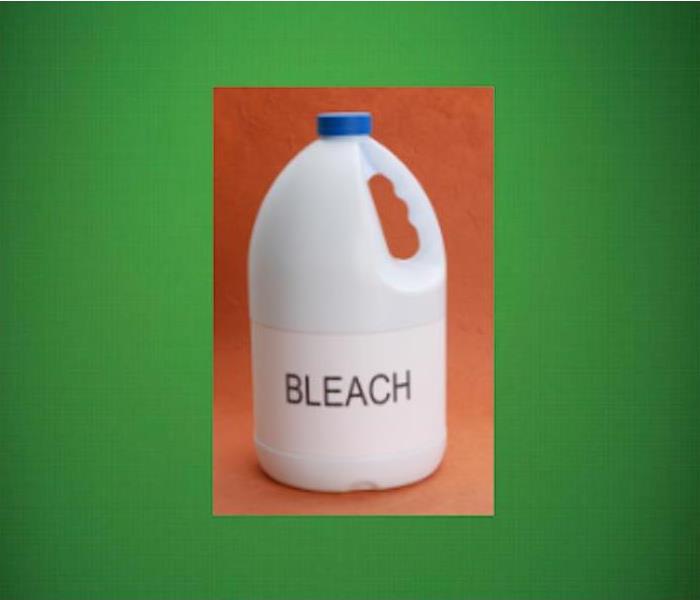Don’t Reach for the Bleach!
2/7/2019 (Permalink)
Chlorine-based bleach has been around for a long, long, time. It was invented in Europe in the late 18th century, and many consider it the be-all and end-all solution to their cleaning needs. But in reality, it can do great harm.
Here are the Top Ten reasons why you don’t want to use bleach to clean:
- Chlorine lacks detergency – in other words, it contains no wetting agents that allow it to penetrate soils, so surfaces must be pre-cleaned before chlorine will effectively kill germs. This is a 2-step process that requires more time.
- Chlorine is very caustic to human tissue. It can produce irritation and burning on your skin and could cause blindness.
- Chlorine reacts with other chemicals to create toxic byproducts and gases. For instance, when bleach comes in contact with ammonia, it can form chlorine gas, causing cellular damage in nasal passageways and lungs. The accidental mixture of these two products in homes has resulted in death. It’s also incompatible with products that contain hydrochloric acid, phosphoric acid and acetic acid (vinegar).
- It may harm your children. After using, bleach remains on surfaces and continues to emit fumes. Recent studies show that children who been exposed to bleach in their homes are more likely to suffer from respiratory illness. In addition, various studies have linked the use of bleach in a household to a higher prevalence of asthma and allergies.
- Using bleach can hurt your pets. Your cleaning products can stay on a pet’s paws or fur. Since cats and dogs often lick themselves, they may ingest harmful chemicals. Due to their tiny size, birds can become sick upon inhaling only a small amount of the fumes. Bleach poisoning in pets can result in vomiting, convulsions, and sometimes death.
- Bleach can kill mold, BUT it depends on the surface the mold is on. Mold grows on both porous and non-porous materials. When dealing with mold on non-porous materials such as shower tiles, tubs, vinyl window trims, counter tops, etc. you can use bleach to kill the mold and disinfect. But using bleach to remove mold from porous materials like drywall and wood can actually accelerate mold growth rather than killing it! When bleach is used on porous materials, the chlorine is left on the surface and only the water component of the bleach is absorbed into the material, aggravating the situation as this provides more moisture for the mold to feed on, where it may then produce allergens and irritants. If you have a mold infestation, call SERVPRO of Springfield / Greene County to professionally remove it.
- Chlorine is extremely corrosive to metal surfaces and can permanently discolor countertops. It can also damage floor finishes, requiring them to be stripped and recoated, which is an expensive process.
- Chlorine discolors fibers and colored surfaces. Carpets, upholstery and clothing are just a few of the materials that may be damaged.
- Chlorine bleach’s disinfectant power is rapidly inactivated by contact with organic matter, such as blood, saliva, tissue, urine, feces, dirt, etc. Chlorine is also weakened by sunlight.
- Diluted chlorine bleach quickly loses its effectiveness, is unstable and can lose its disinfectant qualities very rapidly compared to other, more stable disinfectants.
Some safer and effective alternatives to bleach are:
- Baking soda and white vinegar – they’re non-toxic and non-corrosive. Use them to freshen fabrics, eliminate grease, and clean glass.
- Rubbing alcohol – effectively cleans plastic surfaces of electronics
- Hydrogen peroxide – it’s nontoxic and can be used to disinfect household surfaces. Unlike bleach, hydrogen peroxide is safe to use around food products.
- Soap and warm water – the basics! It’ll clean just about anything in your home and won’t present any health risks. Scrubbing with antibacterial soap will kill bacteria just like harsher chemicals.
Although bleach products may be a bargain, you owe it to yourself, your family or coworkers to use a product that truly cleans, thoroughly disinfects and is safe to use.





 24/7 Emergency Service
24/7 Emergency Service
